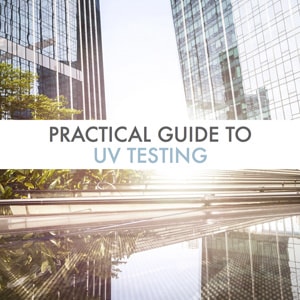ASTM D661
Standard Test Method for Evaluating Degree of Cracking of Exterior Paints
ASTM D661 testing is offered by Micom as part of its paint testing and coating testing services. ASTM D661—Standard Test Method for Evaluating Degree of Cracking of Exterior Paints—provides a visual aid which allows to evaluate the extent of the failure present on paint films. Unfortunately, this standard does not detail a procedure that will lead to the characterization of this attribute. Hence, it is necessary to pair this practice with another method in order to be able to assess the property of the sample. For instance, this test protocol may be associated with the ASTM G154 or ISO 4892-3 practices as a means to condition the specimen for the assessment of the paint film, because they correspond to accelerated weathering tests that rely on the principles of UV testing.
Evaluation of the degree of cracking of exterior paints—use and factors to be considered :
The purpose of ASTM D661 is to provide the tool that will assist in the evaluation of the degree of cracking of exterior paints through a visual inspection of the surface of the specimen. More specifically, this standard supplies photographs of a particular kind of failure as a means to compare them with the cracking present on the surface of the sample. In other words, the illustrations provided by this method have to be interpreted in order to characterize the type of cracking of the material, because they do not represent the whole spectrum of possibilities. On another vein, it is important to keep in mind that this test protocol does not furnish a procedure which will lead to the assessment of the desired attribute. Thus, it is essential to pair this practice with a method that will condition the specimen in order to evaluate the characteristics of the paint film. For example, an accelerated weathering test which relies on the use of fluorescent UV light such as: ASTM G154 is a great example of a test that may be associated with this standard, because as outlined in our UV testing eBook, accelerated fluorescent UV exposure is principally used to appraise the loss of mechanical properties.
Typical experimental parameters for ASTM D661:
The number and the size of the specimens have to be specified.
Other test methods related to ASTM D661:
For additional related test methods, please see ASTM D610 , ASTM D714 , ASTM B117
If you have any questions about the ASTM D661 test, we invite you to contact our material testing lab today. It will be our pleasure to answer your questions and help you with your custom material testing requirements.
Practical UV Testing Guide
Sunlight exposure can have harmful impacts on carbon-based
materials such as coatings, polymers, textiles, and many others.
Learn more about our in-laboratory UV testing process in this guide.


